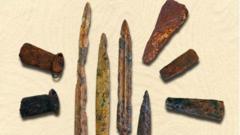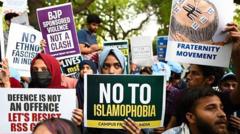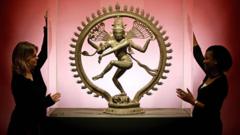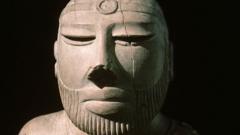Amid a cultural battle in India, a $1 million prize for deciphering the script of the Indus Valley civilization aims to unlock the mysteries of an ancient culture, with political implications surrounding India's historical narrative.
A Million-Dollar Challenge to Unravel the Mysteries of the Indus Valley Civilization

A Million-Dollar Challenge to Unravel the Mysteries of the Indus Valley Civilization
Tamil Nadu’s chief minister offers a hefty reward to those who can decipher an ancient script, fueling scholarly pursuit while highlighting cultural divides in India.
In a move that could change the landscape of historical scholarship, Tamil Nadu's chief minister M.K. Stalin has announced a staggering cash prize of $1 million for anyone able to decode the ancient script of the Indus Valley civilization. This articulation, first unearthed over a century ago, remains an enigma, and the civilization itself, thriving around 5,000 years ago and spanning modern-day India, Pakistan, and Afghanistan, leaves many questions unanswered.
Despite extensive archaeological efforts across more than 2,000 sites that have yielded numerous artifacts, the crux of the Indus Valley civilization—its language, culture, religion, and the timeline of its rise and decline—remains elusive without the script's meaning deciphered. The initiative aims to reignite scholarly attention on this ancient script, yet the motivations extend beyond mere academic inquiry.
The cultural implications of this endeavor are steep, as it coincides with ongoing contests concerning India's ancient heritage. Proponents of Hindu nationalism promote the notion that the Aryan race, linked to the Vedic religion of Hinduism, represents the original inhabitants of India, a cornerstone of the Hindutva ideology advocated by Prime Minister Narendra Modi's party.
In contrast, Stalin's political faction, along with various other groups, assert that the indigenous Dravidian population of southern India predates these northern invaders from Europe. The contention is further complicated by the ambiguous distinctions between these two groups, highlighting the complexities and power struggles surrounding India's historical narrative.
As this challenge unfolds, scholars and enthusiasts alike are poised for a race against time, not only for the chance to uncover ancient wisdom but also to navigate the intricate web of identity and culture in contemporary India.













